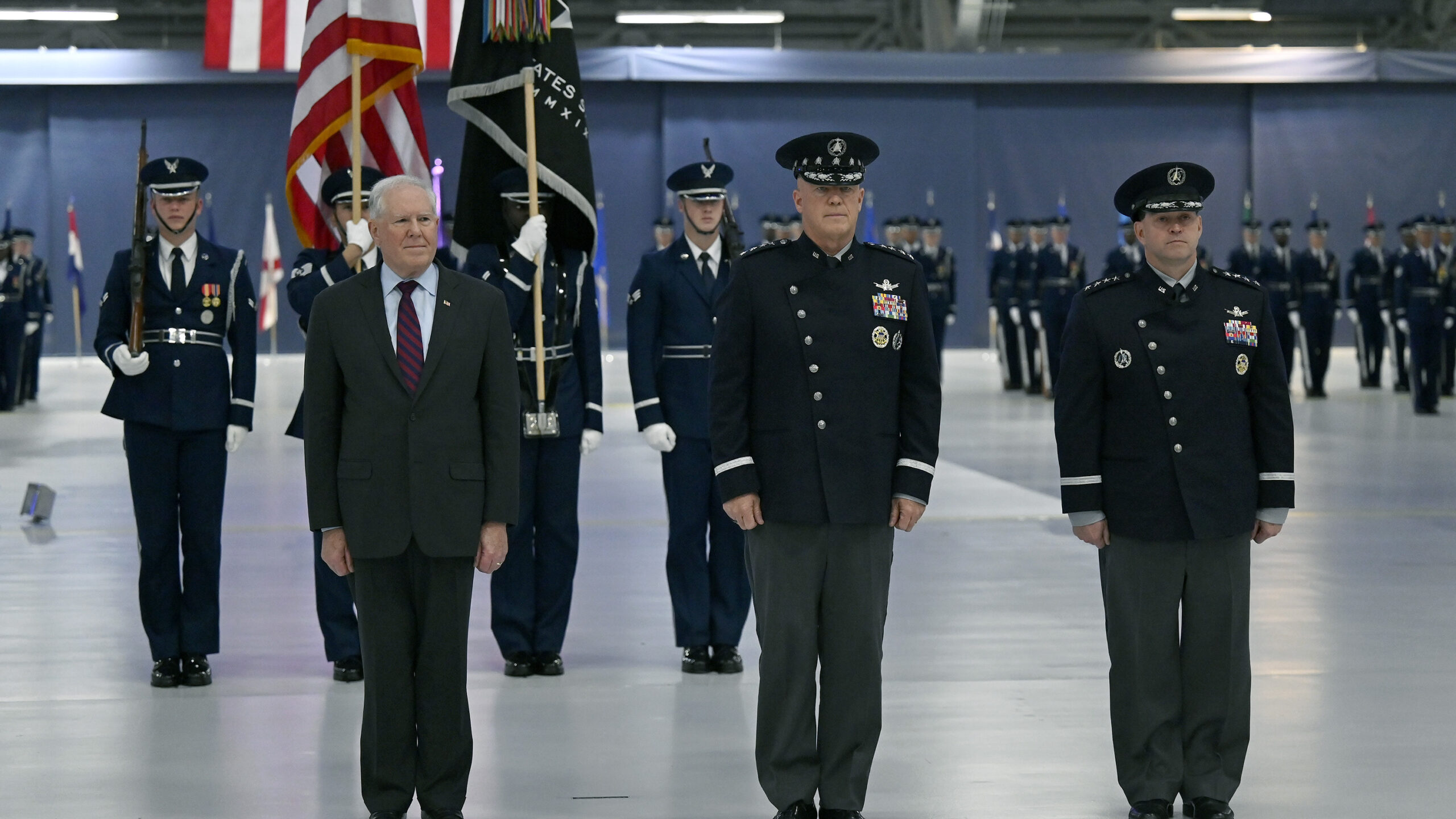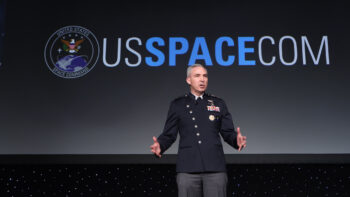
Gen. Chance Saltzman (right) assumes command of the Space Force during a transition ceremony for the Chief of Space Operations at Joint Base Andrews, Md., Nov. 2, 2022. (US Air Force photo by Wayne A. Clark)
WASHINGTON — Chief of Space Operations Gen. Chance Saltzman has issued a set of “commanders notes” to Guardians outlining three “lines of effort (LOEs)” he believes are necessary for the Space Force to be successful — with the top priority as the need to field “combat ready forces” comprising not just weapon systems, but also personnel to operate them and the logistics tail needed to sustain them.
Each LOE is elaborated in a one-page memo, all issued Wednesday on the service’s website.
“Technology makes space operations possible. But the Space Force does not present technology, systems, or capabilities to the Joint Force; we present space forces. This is a small, but important, distinction. A capable and resilient weapon system will be operationally ineffective if its personnel, expertise, tactical employment, and sustainment are insufficient for the mission,” Saltzman writes in LOE 1.
“Space forces must be resilient, ready, and combat-credible. Each of these descriptors is important and must be clearly understood,” he elaborates.
“A resilient force can withstand, fight through, and recover from attacks. A ready force has the trained personnel, equipment, and sustainment capacity to accomplish missions and tasks in a high-intensity operational environment. A combat-credible force has demonstrated the ability to conduct offensive and defensive operations against an adversary. All three are important and we must comprehensively account for each attribute in our force design, force development, and force employment activities,” Saltzman adds.
Building a resilient space architecture is at the top of Air Force Secretary Frank Kendall’s list of seven “operational imperatives” for the Air and Space Forces. It also a key tenant of the Biden administration’s 2021 “United States Space Priorities Framework” outlining interagency policy.
The other two LOEs are:
- “Amplifying the Guardian Spirit,” focused on personnel development, values and support, and previewing in part an upcoming “Guardian Handbook,” LOE 2 says. “Amplifying the Guardian Spirit starts with taking care of Guardians. We will continuously enhance our military and civilian personnel management processes endeavoring to ensure they are transparent, predictable, and professional. As expected of a new service, we have not reliably hit this mark in the past so we will work hard to improve,” Saltzman notes.
- “Partnering to Win,” which stresses the criticality of Space Force partnerships with robust joint, coalition, international, interagency, academic, and commercial partnerships. In particular, Saltzman stresses the need to lower barriers to collaboration, including “over classification.”
Norway to host US Space Development Agency RF antenna, new Link 16 test: SDA director
“On their aircraft and their ground units, they’ll be able to talk directly to us with Link 16 to our Tranche 0 satellites that are on orbit now,” Derek Tournear said at the 2024 Space Symposium.



























